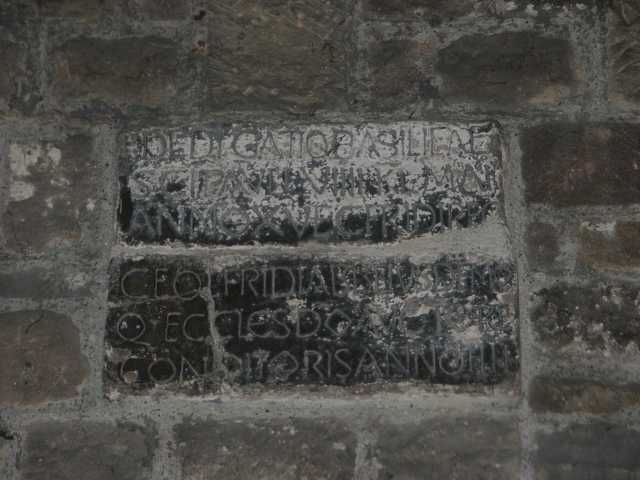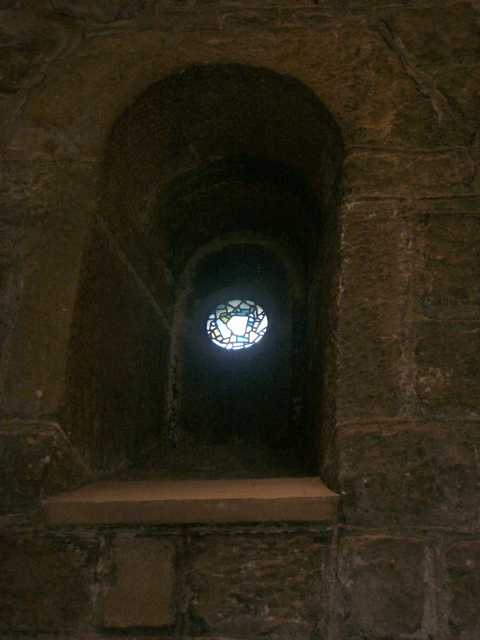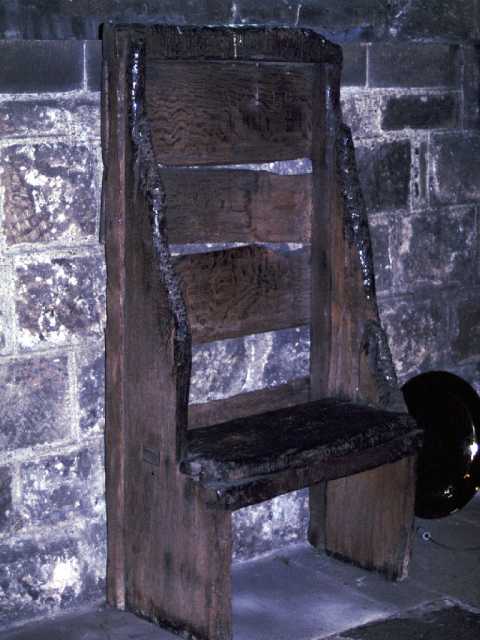

![]()
Jarrow
Location; Take the B1297 east off the A19 at Jarrow, follow Priory Road round to the left then right onto Church Bank. Follow signs to St Paul's.
Description; Originally there were two chapels. One where the present nave now stands to the left of this picture, and the surviving one on the right. A tower was later built connecting the two.
 The
dedication stone survives. It is now above the Chancel arch. It's
latin inscription is;
The
dedication stone survives. It is now above the Chancel arch. It's
latin inscription is;
DEDICATIO BASILICAE
SanCti PAULI VIIII KaLendis MAI
ANNO XV ECGFRIDI REGis
CEOLFRIDI ABBatis EIUSDEM Quo
Que ECCLESiae DeO AUCTORE
CONDITORIS ANNO IIII
The lower case letters are omitted. In English, the translation is; The Dedication of the church, of St Paul on the 9th of the Kalends of May, In the fifteenth year of King Ecgfrith, The 4th year of Abbot Ceolfrith, And also founder under God, of the same Church.
9th Kalends of May =23rd April. 15th year of the reign of Ecgfrith=685AD.
 Founded
by Benedict Biscop in 681AD, the
inscription shows it was dedicated four years later by it's first
Abbot, Ceolfrith (pronounced Chelfrith). As with it's twin monastery
St Peter's, it's windows were
decorated with stained glass. Fragments which have been recovered
during excavations have been assembled into one of the Saxon windows
in the chancel.
Founded
by Benedict Biscop in 681AD, the
inscription shows it was dedicated four years later by it's first
Abbot, Ceolfrith (pronounced Chelfrith). As with it's twin monastery
St Peter's, it's windows were
decorated with stained glass. Fragments which have been recovered
during excavations have been assembled into one of the Saxon windows
in the chancel.
When Benedict died in 690, Ceolfrith became Abbot of both St Peter's and St. Paul's. Ceolfrith set off for Rome in 716AD to make a presentation to the Pope of a Monkwearmouth-Jarrow Bible. He was, however, then 74 years of age and died before reaching Rome. What then happened to the bible is unknown but it has since been recognised as the Codex Amiatinus, which is now in the Laurentian Library in Florence.
 In
686AD the community was struck by plague. All the monks died except
Ceolfrith and a young boy. The boy is thought to have been Bede.
Born in 673AD on the estate of St Peters Monkwearmouth, he was given
over to the care of Benedict Biscop. In 682 he moved to Jarrow,
where he stayed for the rest of his life. Although he is known to
have visited York, and gives a description
of Hadrian's Wall which suggests he at least travelled the immediate
area. His writings, including the Ecclesiastical History of the
English People, drew heavily on the library assembled by Benedict
Biscop, and he corresponded widely in the British Isles and mainland
Europe. One copy of his History is known to have been in
Charlemagne's library in Aachen, Germany. Much of what is now known
of the characters in this period e.g. Cuthbert, Wilfrid
and Hild, stems from Bede's writings,
giving him the title of Father of English History.
In
686AD the community was struck by plague. All the monks died except
Ceolfrith and a young boy. The boy is thought to have been Bede.
Born in 673AD on the estate of St Peters Monkwearmouth, he was given
over to the care of Benedict Biscop. In 682 he moved to Jarrow,
where he stayed for the rest of his life. Although he is known to
have visited York, and gives a description
of Hadrian's Wall which suggests he at least travelled the immediate
area. His writings, including the Ecclesiastical History of the
English People, drew heavily on the library assembled by Benedict
Biscop, and he corresponded widely in the British Isles and mainland
Europe. One copy of his History is known to have been in
Charlemagne's library in Aachen, Germany. Much of what is now known
of the characters in this period e.g. Cuthbert, Wilfrid
and Hild, stems from Bede's writings,
giving him the title of Father of English History.
This chair in the chancel is known as Bede's Chair. It is, however not old enough.
Bede died in 735AD and acquired the description of “Venerable”. He is now buried in the Galilee chapel of Durham Cathedral
![]()
Sources; The Golden Age of Northumbria by Jane Hawkes; Sandhill Press.
Footsteps of the Northern Saints by Basil Hume
All Photographs by the author.